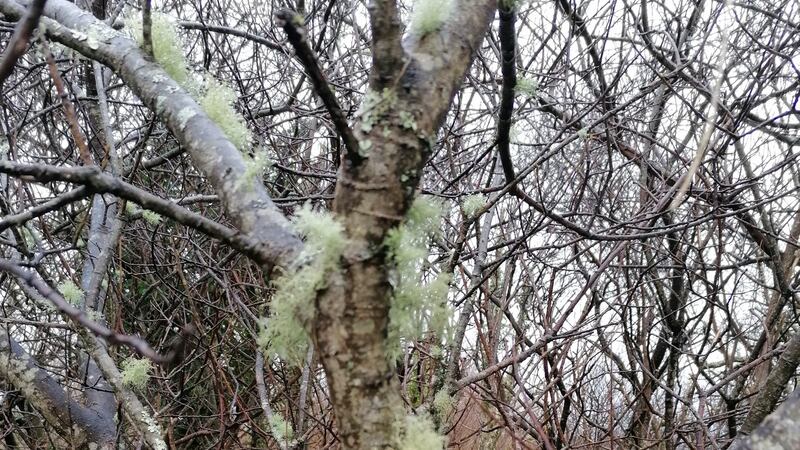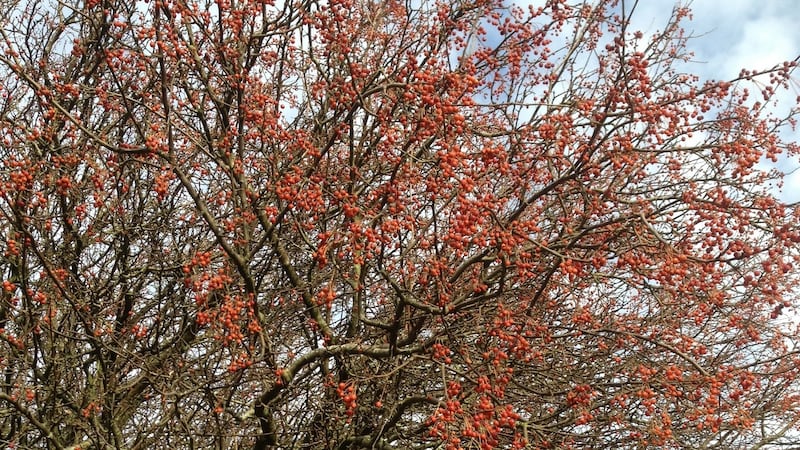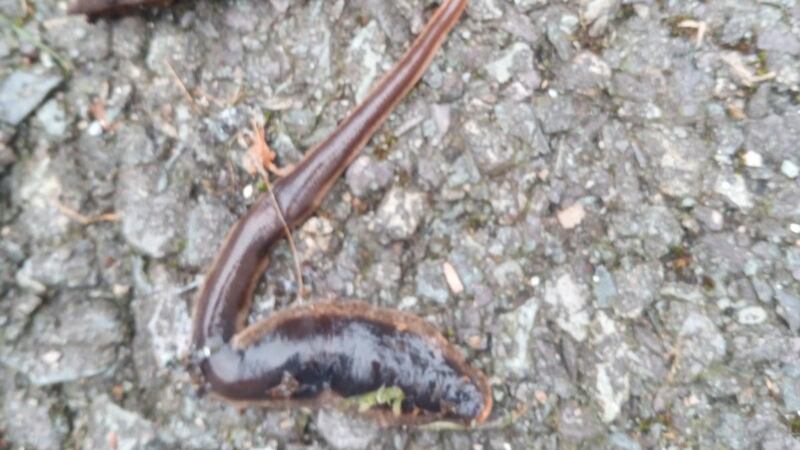We wondered who was pulling down our bird feeders; now we know!
John & Maeve McHardy, Donegal
Camera traps can provide answers to all sorts of mysteries. Badgers are omnivores and will eat both plant and animal material.

Moss on willow – does this confirm excellent air quality, or is that a myth?
Paul Dunne, Galway
This tree is covered with lichens, plant-like life forms made up of fungal hyphae in which photosynthesizing algae grow. They have no roots and get all their requirements directly from the air and the rain. Many of them, such as these shrubby ones, are particularly sensitive to air pollution. So the abundance of them here indicates very good air quality.

This crab apple tree is one of five together in Dublin’s Bushy Park, which attract all sorts of birds (wood pigeons, blackbirds, tits, goldfinches, etc) for the end of winter feast.
Mary McCarrick
Birds depend on such feasts to survive as food is scarce for them during the cold days of winter and early spring.

I discovered this tapeworm underneath a cluster of potted plants next to the house. Are they common in Munster? As a vermiculture hobbyist, should I be concerned for my tiger worms?
Michelle Sheehan
This is a New Zealand flatworm, introduced into Ireland in contaminated potting soil in the 1960s. The National Biodiversity Data Centre has records for it in Munster. It is an invasive species that feeds on earthworms. I don’t know if they eat tiger worms; will report back.

Could you identify this layered fungus growing on a tree with ivy in a sheltered woodland?
P Dunne
A second picture was necessary to see the underside, which is vital when identifying fungi. It is Flammulina velutipes, velvet shank. Its stems are brown and felty and it grows on deciduous trees at this time of year.
Have you a nature query, observation or photo you would like to share with The Irish Times? Submit it, with location of the image, via our website irishtimes.com/eyeonnature




















